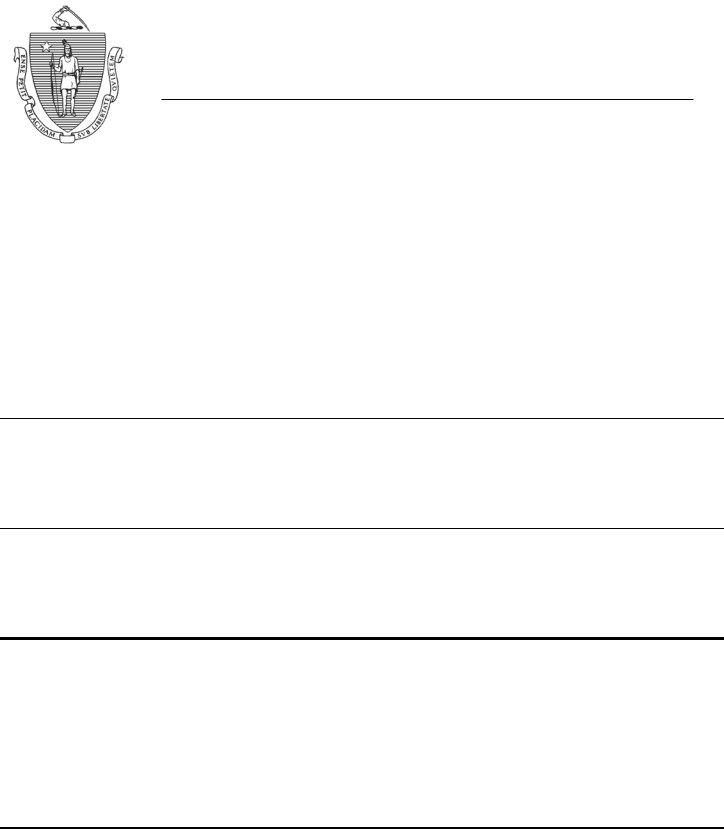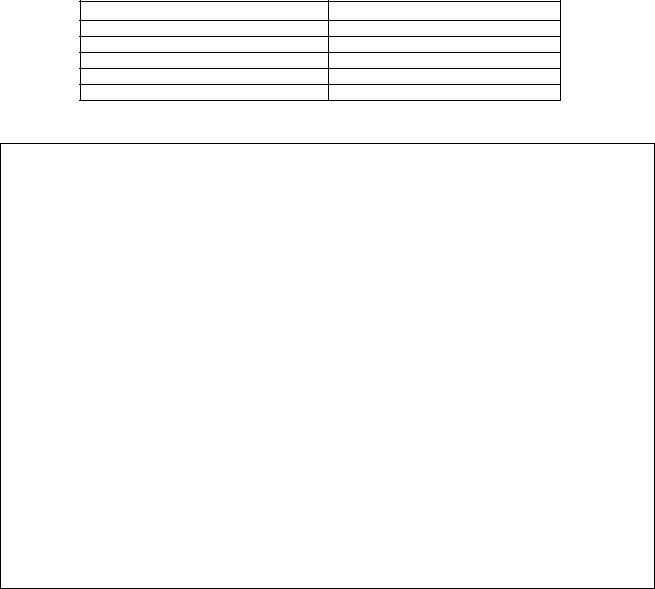Are you looking for a way to easily organize your child's school paperwork? Look no further than the Parent Permission Authorization (PPA) form. This important document can help streamline your processes and make sure that everyone at school has the necessary permission to do their job. Here, we will provide an overview of what a PPA is, why it is necessary, and how it could make managing school paperwork easier on parents and teachers alike. So read on to learn more about this must-have form!
| Question | Answer |
|---|---|
| Form Name | Ppa Form |
| Form Length | 6 pages |
| Fillable? | No |
| Fillable fields | 0 |
| Avg. time to fill out | 1 min 30 sec |
| Other names | ppa downloadable forms, ppa form download, ppa form online, ppa con ed form |

The Commonwealth of Massachusetts
Department of Education
350 Main Street, Malden, Massachusetts |
Telephone: (781) |
Preservice Performance Assessment for Practicum or Practicum Equivalent
Professional Standards for Teachers: See 603 CMR 7.08.
Part I |
Practicum:_____________Practicum Equivalent: ___________ |
1.Legal Name: (print)________________________________________________________________2. SSN: ______________________________
3.Address: _____________________________________________________________________________________________________________
4.Sponsoring Organization: _____________________________________________________Program & Level: __________________________
5.Practicum/Equivalent Course Number: ______________________________________________Credit Hours: _________________________
Course Title: ________________________________________________________________________________________________________
6.Practicum/Equivalent Site: ______________________________________________________7: Grade Levels of Students: _______________
8.Total number of practicum hours: _________________Number of hours assumed full responsibility in the role: ______________________
9.Other Massachusetts licenses held if any: __________________________________________________________________________________
10.Have any components of the approved program been waived (see Regulations 7.03(1)(b)): Yes _______________No___________________
Part II – To be completed by the Program Supervisor
Name: (print)___________________________________________________________________Position/Title_____________________________
The Applicant completed a practicum/equivalent designed by the Sponsoring organization as partial preparation for the following license: Applicant’s License Field: ___________________________________________________________Grade Level: __________________________
Part III – To be completed by the Supervising Practitioner
Name: (print)_____________________________________________________________________Position: _______________________________
School System: _____________________________________________________License: Initial (# yrs. experience): ______or Professional: _____
Massachusetts License #: ______________________________________________________Field(s): ____________________________________
Part IV – Initial 1, 2, and 3.
1.Initial meeting held at which the Professional Standards and the procedures for evaluation were explained to the Applicant.
Date: ________Applicant: _________________ Program Supervisor: __________________ Supervising Practitioner: __________________
2.Meeting held midway through the practicum at which the Applicant’s progress toward the Professional Standards was discussed.
Date: ________Applicant: __________________ Program Supervisor: _________________ Supervising Practitioner: __________________
3.Final meeting held to complete evaluation and to allow Applicant an opportunity to raise questions and make comments.
Date: ________Applicant: __________________ Program Supervisor: _________________ Supervising Practitioner: __________________
Part V
Candidate has successfully completed the Preservice Performance Assessment (Sections: 7.03(2)(a)(4) & 7.04(2)(b)(4)(b)) Yes: _____No: _____
Program Supervisor (sign): ____________________________________________________________________ Date: _____________________
Supervising Practitioner (sign): _________________________________________________________________ Date: _____________________
Mediator (if necessary: see 7.04(4))(sign): _________________________________________________________ Date: ____________________
1 of 6

Preservice Performance Assessment for Practicum or Practicum Equivalent
Professional Standards for Teachers: See 603 CMR 7.08
Please use this assessment in conjunction with the Preservice Performance Assessment Guidelines: the rating scale is described on page 4; evaluation questions relating to the standards are pages 5 - 12, and
Standard A - Plans Curriculum and Instruction
Indicators |
Evidence |
1. Draws on content standards of the relevant curriculum |
|
frameworks to plan sequential units of study, individual |
|
lessons, and learning activities that make learning |
|
cumulative and advance students’ level of content |
|
knowledge. |
|
(Specify Curriculum Framework title, learning standards, |
|
and concept and skills used [attach list if necessary]). |
|
2. Draws on results of formal and informal assessments |
|
as well as knowledge of human development to identify |
|
teaching strategies and learning activities appropriate to |
|
the specific discipline, age, level of English language |
|
proficiency, and range of cognitive levels being taught. |
|
3.Identifies appropriate reading materials, other resources, and writing activities for promoting further learning by the full range of students within the classroom.
4.Identifies prerequisite skills, concepts, and vocabulary needed for the learning activities and design lessons that strengthen student reading and writing skills.
5.Plans lessons with clear objectives and relevant measurable outcomes.
6.Draws on resources from colleagues, families, and the community to enhance learning.
7.Incorporates appropriate technology and media in lesson planning.
8.Uses information in Individualized Education Programs (IEPs) to plan strategies for integrating students with disabilities into general education classrooms.
Rating:
Explanation of Rating for Standard A - Plans Curriculum and Instruction
Rating Scale: 1=Does Not Meet the Standard; 2=Meets the Standard, 3=Exceeds the Standard; NA=Not Applicable.
Candidate’s Name: _____________________________________________________License: _____________________________
Program Supervisor (initial): ______________________________________________________Date: ______________________
Supervising Practitioner (initial): ___________________________________________________Date: _____________________
Page 2 of 6

Preservice Performance Assessment for Practicum or Practicum Equivalent
Professional Standards for Teachers: See 603 CMR 7.08
Standard B – Delivers Effective Instruction
Indicators |
Evidence |
1.Communicates high standards and expectations when beginning the lesson.
a)Makes learning objectives clear to students.
b)Communicates clearly in writing and speaking.
c)Uses engaging ways to begin a new unit of study or lesson.
d)Builds on students’ prior knowledge and experience.
2.Communicates high standards and expectations when carrying out the lesson.
a)Uses a balanced approach to teaching skills and concepts of elementary reading and writing.
b)Employs a variety of
c)Demonstrates an adequate knowledge of and approach to the academic content of lessons. (See
d)Employs a variety of reading and writing strategies for addressing learning objectives.
e)Uses questioning to stimulate thinking and encourages all students to respond.
f)Uses instructional technology appropriately.
g)Employs appropriate sheltered English or subject matter strategies for English learners.
3.Communicates high standards and expectations when extending and completing the lesson.
a)Assigns homework or practice that furthers student learning and checks it.
b)Provides regular and frequent feedback to students on their progress.
c)Provides many and varied opportunities for students to achieve competence.
4.Communicates high standards and expectations when evaluating student learning.
a)Accurately measures student achievement of, and progress toward, the learning objectives with a variety of formal and informal assessments, and uses results to plan further instruction.
b)Translates evaluations of student work into records that accurately convey the level of student achievement to students, parents or guardians, and school personnel.
Rating:
Explanation of Rating for Standard B – Delivers Effective Instruction
Rating Scale: 1=Does Not Meet the Standard; 2=Meets the Standard, 3=Exceeds the Standard; NA=Not Applicable.
Candidate’s Name: _____________________________________________________License: __________________
Program Supervisor (initial): ______________________________________________________Date: __________
Supervising Practitioner (initial): ___________________________________________________Date: __________
Page 3 of 6

Preservice Performance Assessment for Practicum or Practicum Equivalent
Professional Standards for Teachers: See 603 CMR 7.08
Standard C – Manages Classroom Climate and Operation
Indicators |
Evidence |
1.Creates an environment that is conducive to learning.
2.Creates a physical environment appropriate to a range of learning activities.
3. Maintains appropriate standards of behavior, mutual respect, and safety.
4.Manages classroom routines and procedures without loss of significant instructional time.
Rating:
Explanation of Rating for Standard C – Manages Classroom Climate and Operation
Rating Scale: 1=Does Not Meet the Standard; 2=Meets the Standard, 3=Exceeds the Standard; NA=Not Applicable.
|
Standard D – Promotes Equity |
Indicators |
Evidence |
1.Encourages all students to believe that effort is a key to achievement.
2.Works to promote achievement by all students without exception.
3.Assesses the significance of student differences in home experiences, background knowledge, learning skills, learning pace, and proficiency in the English language for learning the curriculum at hand and uses professional judgment to determine if instructional adjustments are necessary.
4.Helps all students to understand American civic culture, its underlying ideals, founding political principles and political institutions, and to see themselves as members of a local, state, national, and international civic community.
Rating:
Explanation of Rating for Standard D – Promotes Equity
Rating Scale: 1=Does Not Meet the Standard; 2=Meets the Standard, 3=Exceeds the Standard; NA=Not Applicable.
Candidate’s Name: _____________________________________________________License: __________________
Program Supervisor (initial): ______________________________________________________Date: ___________
Supervising Practitioner (initial): ___________________________________________________Date: __________
Page 4 of 6

Preservice Performance Assessment for Practicum or Practicum Equivalent
Professional Standards for Teachers: See 603 CMR 7.08
Standard E – Meets Professional Responsibilities
Indicators |
Evidence |
1.Understands his or her legal and moral responsibilities.
2.Conveys knowledge of and enthusiasm for his/her academic discipline to students.
3. Maintains interest in current theory, research, and developments in the academic discipline and exercises judgment in accepting implications or findings as valid for application in classroom practice.
4.Collaborates with colleagues to improve instruction, assessment, and student achievement.
5. Works actively to involve parents in their child’s academic activities and performance, and communicates clearly with them.
6.Reflects critically upon his or her teaching experience, identifies areas for further professional development as part of a professional development plan that is linked to grade level, school, and district goals, and is receptive to suggestions for growth.
7.Understands legal and ethical issues as they apply to responsible and acceptable use of the Internet and other resources.
Rating:
Explanation of Rating for Standard E – Meets Professional Responsibilities
Rating Scale: 1=Does Not Meet the Standard; 2=Meets the Standard, 3=Exceeds the Standard; NA=Not Applicable.
Candidate’s Name: _____________________________________________________License: __________________
Program Supervisor (initial): _____________________________________________________Date: ____________
Supervising Practitioner (initial): __________________________________________________Date: ___________
Page 5 of 6

Preservice Performance Assessment for Practicum or Practicum Equivalent
Professional Standards for Teachers: See 603 CMR 7.08
Summary Decision for Preservice Performance Assessment
Teacher candidate’s Preservice Performance Assessment in the practicum or practicum equivalent meets the Professional Standards for Teachers: Yes ________ or No ________.
Candidate (sign): _______________________________________________________License: ________________
Program Supervisor (sign): _______________________________________________________Date: __________
Supervising Practitioner (sign): ____________________________________________________Date: __________
Standard |
Rating (from pp. |
(a)Plans Curriculum
(b)Delivers Effective Instruction
(c)Manages Classroom Climate
(d)Promotes Equity
(e)Meets Professional Responsibilities
Rating Scale: 1=Does Not Meet the Standard; 2=Meets the Standard, 3=Exceeds the Standard; NA=Not Applicable.
Summary Comments (integrated assessment of performance):
The sponsoring organization should maintain this assessment record as part of its candidate’s permanent file. Copies do not have to be sent to the Department of Education.
Page 6 of 6